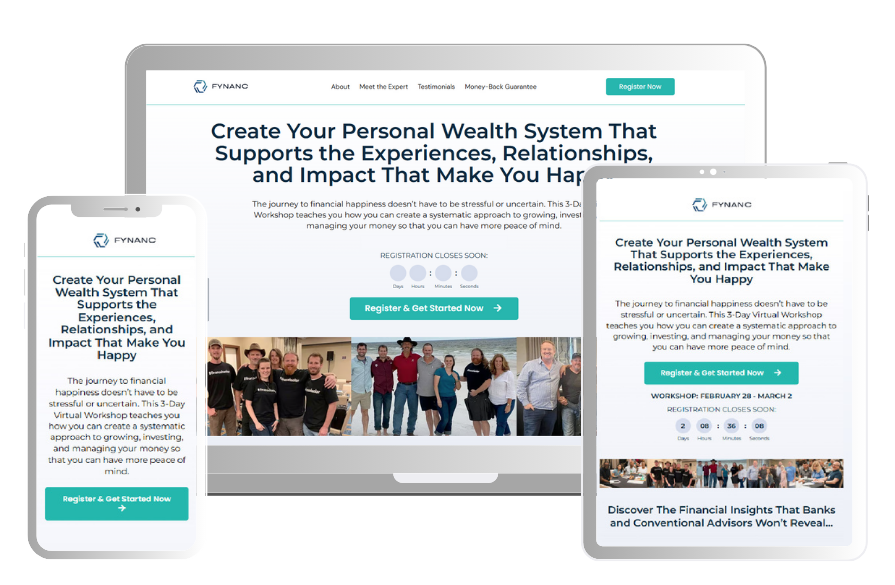What is passive income?
Passive income can be a great way to have peace of mind and secure your financial future. It provides you with a way to generate income that supports your lifestyle without you having to go to work every day. For most investors, an investment portfolio that generates enough passive income to support their lifestyle completely is the ultimate goal.
In this blog, we will unpack how you can generate passive income much faster and safer than many investors do by using our Amplified Strategy®.
Let’s first start with the basics by defining what passive income is.
Defining passive income
Passive income is income derived from investments such as rental properties, limited partnerships, and other enterprises. The reason it is called “passive” is that it’s income that a person earns without being directly involved.

While many people like to think of passive income as “earning money while sitting back and doing nothing,” this isn’t entirely accurate. All investments will always require some degree of maintenance; however, some require significantly less than others which is why they are considered “more passive.”

Examples of passive income include dividends from stocks, interest on bonds, and rental income from real estate, among others.
“To obtain financial freedom, one must either be a business owner, an investor or both, generating passive income, particularly on a monthly basis.”
– Robert Kiyosaki
Five levels of passive income

Now that we know the basics of passive income, let’s take a look at the five different levels of passive income.
Level 1: Passive income using your capital

The first level of passive income is purchasing assets using only capital and no debt.
Any asset can be purchased using only cash. When it comes to generating passive income, investors focus on acquiring income-producing assets for their income streams. Examples include purchasing dividend-paying stocks, real estate with no mortgage, bonds, etc.
The challenge with this approach is that it requires a large amount of capital which generates a small return.

Level 2: Passive income using investor’s spreads (traditional investor)

In this level, you use leverage (borrowed money) to acquire income-producing assets. Done correctly, you invest less of your hard-earned money into the investment which increases your passive income in terms of return. This is the method many investors use to generate passive income.
While in Level 1, you use one component to generate passive income, the asset itself, in Level 2 you use two components to generate passive income from your investment: the income-producing ASSET and the LOAN.

These two components now create a “spread”. In this article, we will focus specifically on “Income Spreads.”
Putting it simply, an income spread is the difference between the rate at which you borrow money (loan) and the rate of cash flow you make from the investment (income-producing asset). For example, you borrow money at 5% from the bank and invest it at 6%. You’re making a 1% spread.
Let’s consider a rental property.
An investor borrows money from a bank and invests their own money as down payment to purchase a property. For every $1.20 the property generates after expenses, the investor pays the bank $1.00 for the money borrowed, leaving the investor with $0.20 in this example. While the spread increases slowly over the years as rents from the rental property increase, the increase is very small.
This is what many investors do and is called an “Investor’s Spread”. This works well for long-term passive income, but as you can see from the following diagram, the investor must structure the spread carefully because most spreads are too thin to handle market volatility.
In real estate, most spreads are under 1.5% meaning that even small fluctuations in rents can wipe out the thin investor’s spread. Investor’s must offset this thin spread by having enough reserves.


Level 3: Passive income using banker’s spreads (personal financier)

In this level, you adopt the mindset of a personal financier. This is where you incorporate a “banker’s spread” into your portfolio.
This powerful spread is made up of several financial strategies that are optimized (using advanced technology) and work together to increase the spread relatively quickly. These financial strategies include floats, velocity of money, and tactical debt among others. Our advanced technology combines them in a very precise way to generate optimized results, which in turn allows us to generate significantly better passive income much faster than the investor’s spreads.
The diagram below shows how the thin 1% investor’s spread grows into a banker’s spread of 8% or more in a relatively short period of time.

What’s more, this strategy does NOT require large down payments, nor does it depend on any one asset such as rental properties or dividend-paying stocks. In fact, we encourage our students to diversify across several different income-producing assets, all of which they can control from their smart devices with as little hassle as possible.

Level 4: Passive income using an “asset factory”

Level 4 is where all of our students start.
In this level, you continue to adopt the mindset of a personal financier. This is where you build a “factory” that purchases your various income-producing assets. You focus on running the factory model, and the factory purchases the assets.
In this model, using your asset factory, you first build the banker’s spreads shown in Level 3. In turn, your asset factory purchases assets with investor’s spreads in Level 2. You end up with the best of both worlds, however it’s essential you begin with the banker’s spread. It not only acts as your safety net, but also allows you to purchase income-producing assets at an exponential rate.
This level gives you the fastest path to your passive income goals.


Level 5: Passive income using a “perpetual machine”

In this level, you move towards building a “perpetual machine” which generates consistent, sustainable passive income.
A perpetual machine is a “hybrid” asset made up of several components. It uses advanced financial strategies to offset any downsides of Level 4 passive income by combining appreciation and cash flow in a very strategic manner. The appreciating assets generate enough equity so that distributions fund the asset factory.
Once your perpetual machine is setup and running optimally (which requires upfront capital), it becomes self-sustaining meaning your contributions can stop. The results are spectacular and with relatively minimal input on your part, you will see as your perpetual machine generates cash flow and appreciation much faster than most investments.
Our students target and move towards building their perpetual machine and for most, this goal is achievable within a few short years.
Passive income is part of the game of finance
One of the main takeaways we want you to get out of this is that when you think of passive income, most investors think of the asset (e.g. “rental real estate”). This is Level 1 and 2 thinking. As you now know, the asset is only part of the picture.
You should start by understanding the finance part first (Amplified Approach™).
Learn more about the Amplified Approach:








